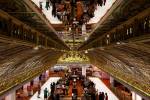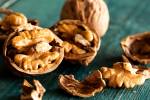Flat surfaces come to life with tablescapes
"There is no useful rule without an exception." Thomas Fuller, M.D. (1654-1734), English physician, "Gnomologia" (1732)
Webster doesn't seem to know what a tablescape is, so aren't you lucky -- I do! For those of you who have read my tips, you will know that I have two entries about tablescapes: one, vary the heights on your tablescape; and two, learn what a tablescape is. The second one is from the sarcastic muse.
Today, we're going to learn not only what it is, but how to create beautiful and exciting ones.
OK, to begin with, any piece of furniture that has a top can be home to a tablescape. This includes tables (duh!), dressers, bureaus, bookcases -- any flat surface.
Do you realize just how important tablescapes are? Some major shelter (home, design, etc.) magazines have tabletop editors. Really.
Like magazine editors, I hope we all realize the importance of accessories. Those pieces we bring into our home to accessorize our space are just as important, or more so, than the major pieces. The entire look of a room can be enhanced or ruined by these important purchases.
It seems that originally (maybe by the Pilgrims) the term was used to describe a holiday or special occasion table. But, please, we know that every day is special and so should every tabletop!
There are simple rules for tablescapes and when you know them, you can have so much fun creating these little mini-environments.
Number one: Remember the rule of three, or rule of odd numbers. When setting up your tablescape, keep in mind that the eye likes to see an odd number of things. I could go on and on about that, but trust me, it's true. So when picking pieces for your tablescape, pick three, five, seven, etc. More than likely you won't exceed five. And, for smaller surfaces, you may just have one. For instance, a small bedside table may just have a lamp. That's perfectly OK.
Number two: For interest, pick different shapes, finishes and heights for your tablescape.
And that my friends, is pretty much it. The rest is left up to your creativity and interests.
OK, we have a blank canvass -- a nice clear surface on which to create our little masterpiece. Let's pretend the surface is that of a table next to a sofa or chair. In creating a tablescape we have to also think of practicality. On our table we will probably start with lighting since it's next to seating. So, our first piece will be a lamp and it will serve as the anchor for the creation.
Now you can add other pieces graduating in size and height. If you have something you want to use, but it's a tad smaller than you want, use books to raise it up and give it more importance.
Mix round, square and flat pieces to create interest and, if you maintain some sense of sameness with either color or theme, your choices are unlimited. Examples include a lamp, a picture frame and a smaller box, basket or bowl. Books are also excellent for tabletops, either by themselves or, as pointed out before, as a base for a smaller piece.
Being an expert in anything opens you up for all manner of compliments and people seeking advice. When your friends and family see how expertly you have now managed your space, look out, you will be in great demand.
Keep in mind that, as with all design and decoration, there is no decorating police and it's your space and you can do what you wish with it. But, if you can follow a few simple suggestions (rules sounds too bossy) and make everything better, why wouldn't you?
Have fun with your tabletops. Make them your own personal masterpieces. And if you have any you would like to share, I would love to see them. Drop me an e-mail.
Carolyn Muse Grant is a founder and immediate past president of the Architectural & Decorative Arts Society, as well as an interior design consultant/stylist specializing in home staging. Send questions to creativemuse@cox.net.























